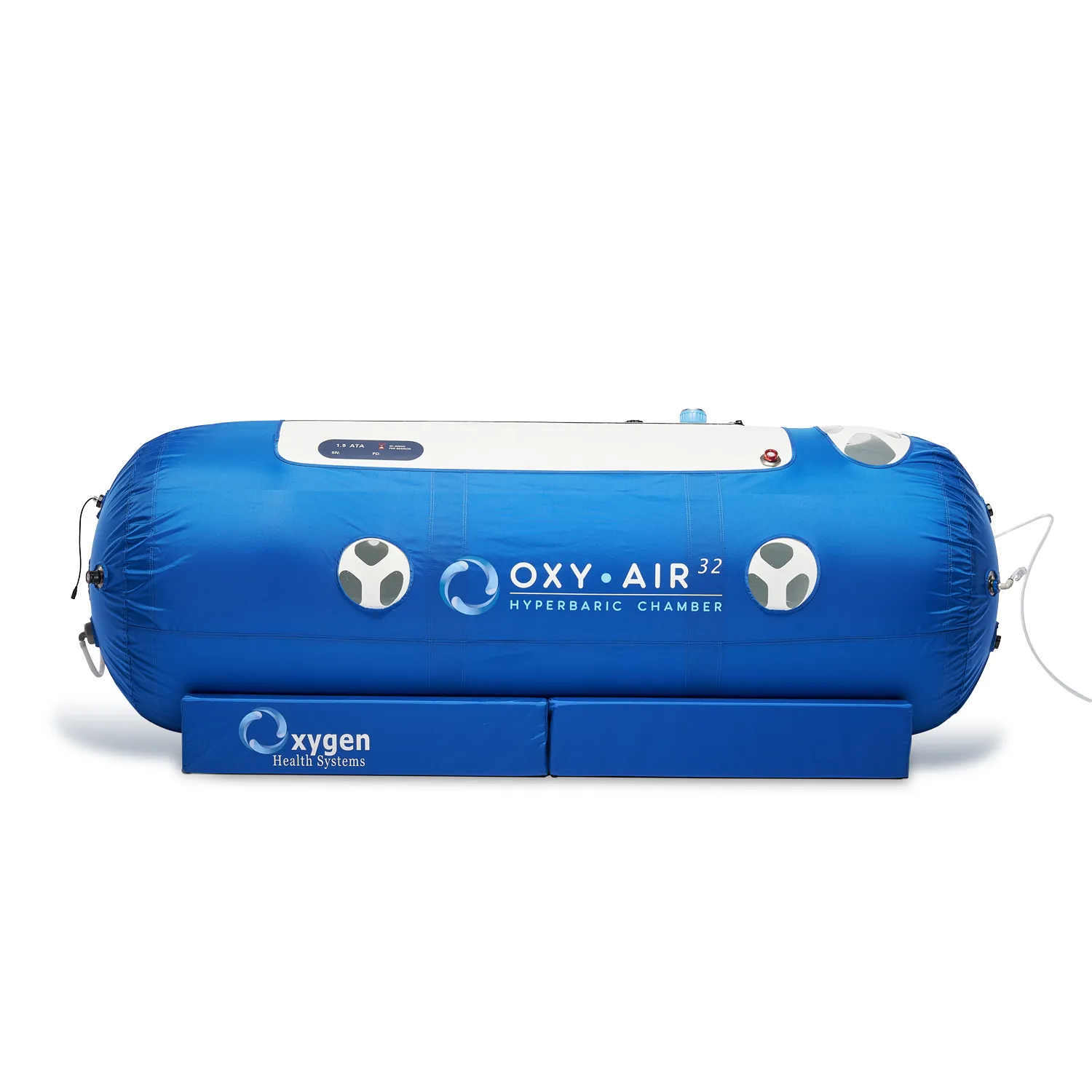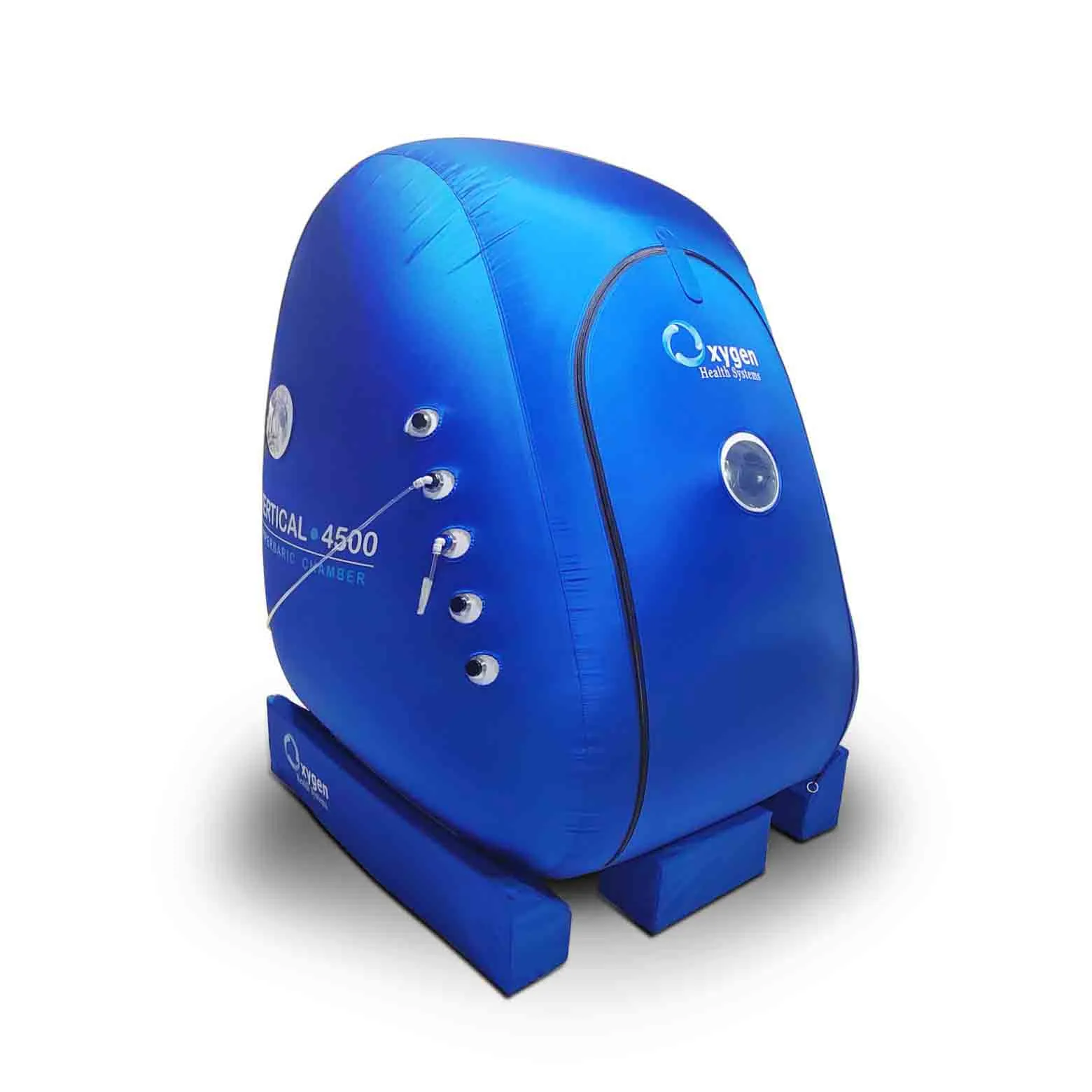Hyperbaric Oxygen Chambers
Can Hyperbaric Oxygen Therapy Help Relieve Chronic Pain?
Hyperbaric oxygen therapy (HBOT) is increasingly being recognized as a complementary treatment for a range of conditions, particularly for its potential benefits in chronic pain management. With chronic pain affecting millions globally, people are exploring alternative therapies to help alleviate symptoms when conventional treatments fall short. Hyperbaric therapy uses pressurized oxygen to encourage healing and reduce inflammation in the body. Read on to learn whether hyperbaric oxygen therapy can help relieve chronic pain.
How Hyperbaric Oxygen Therapy Works for Chronic Pain
HBOT involves placing a patient in a chamber filled with pressurized oxygen, which helps saturate the blood and tissues with oxygen. This high oxygen concentration can reduce inflammation and speed up the healing process, both of which are crucial for those with chronic pain. By reaching damaged tissues and alleviating inflammation, hyperbaric oxygen therapy provides pain relief at the source rather than just masking symptoms. Those who experience chronic pain may substantially benefit from this unique, non-invasive treatment approach.
Enhancing Cellular Regeneration
One of the key benefits of HBOT in treating chronic pain is its ability to accelerate cellular regeneration. By delivering a high concentration of oxygen directly to the cells, HBOT promotes the repair and regeneration of damaged tissues. This is particularly helpful in conditions where pain is caused by injury or inflammation. Faster cellular healing means reduced pain over time as cells recover their normal function and health.
Reducing Inflammation
Inflammation is a primary cause of pain in chronic conditions like arthritis and fibromyalgia. The pressurized oxygen in HBOT reduces inflammatory markers, which, in turn, can lessen pain. Patients with inflammatory conditions often report a decrease in pain and improved mobility following regular HBOT sessions. By reducing inflammation at the cellular level, HBOT addresses the root of pain rather than just temporarily relieving it.
Supporting Nerve Health and Pain Reduction
Chronic pain often results from nerve damage or dysfunction. HBOT’s high oxygen environment encourages nerve repair and reduces neuropathic pain. This is valuable for patients with nerve-related conditions, such as diabetic neuropathy or post-surgical nerve pain. With regular sessions, patients may experience less pain and greater comfort in areas affected by nerve damage.

Improving Blood Flow and Oxygenation
HBOT enhances circulation, which is essential for pain management. By increasing blood flow and oxygenation, this therapy helps nourish and heal damaged tissues. Poor circulation can exacerbate pain and inflammation, making HBOT particularly important for patients with vascular conditions. Enhanced oxygenation improves tissue health and may reduce pain levels, providing a natural way to support chronic pain relief.
Reducing Muscle Spasms and Tension
Chronic pain is often accompanied by muscle spasms and tension, which can worsen discomfort. HBOT helps relax the muscles by delivering oxygen deep into muscle tissues, reducing spasms. This relaxation effect is especially beneficial for those dealing with conditions like fibromyalgia, where muscle pain and tightness are constant. Relaxed muscles mean less pain and fewer spasms over time.
Boosting Immune System Function
A strong immune system can help in managing chronic pain, particularly for conditions triggered by inflammation or infections. HBOT strengthens immune cells by providing them with ample oxygen, which improves their function. For chronic pain sufferers, a more robust immune system can mean fewer flare-ups and faster recovery times when pain episodes do occur.
Aiding Post-Surgical Recovery
Patients recovering from surgery often experience chronic pain related to scar tissue or prolonged healing processes. HBOT can aid in post-surgical recovery by reducing inflammation and speeding up healing. With faster recovery, patients face fewer complications and less pain. By helping reduce post-surgical inflammation, HBOT plays a significant role in minimizing chronic pain following invasive procedures.
Reducing Pain From Sports Injuries
Athletes with chronic injuries often deal with recurring pain. HBOT has shown promise in helping manage pain from sports-related injuries, as it accelerates tissue repair and reduces inflammation. For athletes facing pain from overuse or recurring injuries, HBOT offers a non-invasive way to maintain performance while addressing the root causes of pain.
Helping With Chronic Fatigue and Pain
Chronic pain and chronic fatigue syndrome (CFS) frequently coexist, as one condition often exacerbates the other. HBOT helps to increase cellular energy and reduce pain levels, making it easier for CFS patients to manage both conditions. This therapy’s ability to combat fatigue and relieve pain makes it an effective complementary treatment for CFS patients looking for holistic options.
Improving Sleep Quality
Chronic pain often leads to poor sleep quality, as discomfort can prevent restful sleep. HBOT can reduce pain, thereby enabling patients to achieve better sleep. With improved sleep, patients often experience less pain, as restful sleep plays a role in pain management and mental health. Better sleep quality enhances overall quality of life for those dealing with chronic pain.

Relieving Migraines and Headaches
Many chronic pain patients experience frequent migraines or headaches. HBOT may help by reducing inflammation in blood vessels and improving oxygen delivery to the brain. This therapy offers relief to those who experience headaches due to restricted blood flow or inflammation, providing an alternative solution to medication for pain relief. Regular HBOT sessions can reduce both the frequency and intensity of migraines.
Addressing Pain From Autoimmune Disorders
Autoimmune conditions like rheumatoid arthritis and lupus involve chronic pain as a primary symptom. HBOT helps reduce autoimmune inflammation, easing pain and supporting overall health. Patients with autoimmune disorders often experience fewer flare-ups and reduced pain levels after HBOT treatment. By modulating the immune system and lowering inflammation, this therapy helps manage autoimmune-related pain more effectively.
Enhancing Mental Well-Being
Living with chronic pain often affects mental health, leading to anxiety or depression. HBOT can support mental well-being by reducing pain and improving cellular health, which leads to an overall improved quality of life. Patients experiencing reduced pain often report better mood and emotional resilience. HBOT’s positive impact on physical health translates to mental health benefits, offering a holistic approach to managing chronic pain.
Increasing Accessibility With Walk-In Hyperbaric Chambers
The availability of walk-in hyperbaric chambers has made HBOT more accessible for chronic pain patients. These chambers provide the same therapeutic benefits as traditional models but are easier to use and more comfortable for individuals with limited mobility. For those looking to manage chronic pain with regular HBOT sessions, walk-in hyperbaric chambers offer a convenient and user-friendly option.
Now that you know how hyperbaric oxygen therapy can help relieve chronic pain, consider talking to your primary care provider to see if this treatment would benefit you. By increasing oxygen levels in the blood and tissues, this therapy supports healing at the cellular level, providing relief from the inside out. Hyperbaric oxygen therapy has the potential to transform pain management and improve the quality of life for those experiencing chronic pain.






